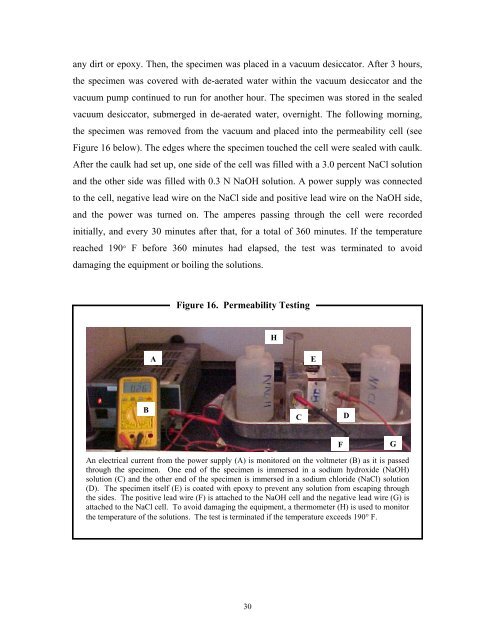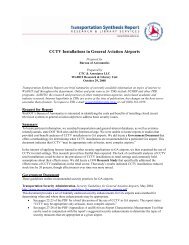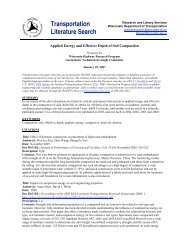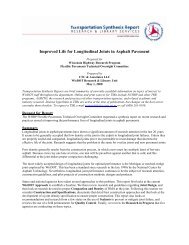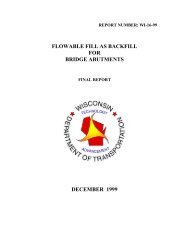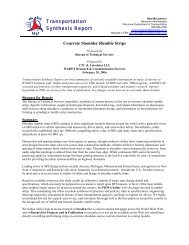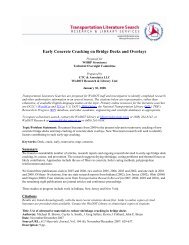DateLaboratory Testing of Portland Cement Concrete Patch Material ...
DateLaboratory Testing of Portland Cement Concrete Patch Material ...
DateLaboratory Testing of Portland Cement Concrete Patch Material ...
Create successful ePaper yourself
Turn your PDF publications into a flip-book with our unique Google optimized e-Paper software.
any dirt or epoxy. Then, the specimen was placed in a vacuum desiccator. After 3 hours,the specimen was covered with de-aerated water within the vacuum desiccator and thevacuum pump continued to run for another hour. The specimen was stored in the sealedvacuum desiccator, submerged in de-aerated water, overnight. The following morning,the specimen was removed from the vacuum and placed into the permeability cell (seeFigure 16 below). The edges where the specimen touched the cell were sealed with caulk.After the caulk had set up, one side <strong>of</strong> the cell was filled with a 3.0 percent NaCl solutionand the other side was filled with 0.3 N NaOH solution. A power supply was connectedto the cell, negative lead wire on the NaCl side and positive lead wire on the NaOH side,and the power was turned on. The amperes passing through the cell were recordedinitially, and every 30 minutes after that, for a total <strong>of</strong> 360 minutes. If the temperaturereached 190° F before 360 minutes had elapsed, the test was terminated to avoiddamaging the equipment or boiling the solutions.Figure 16. Permeability <strong>Testing</strong>HAEBCDFGAn electrical current from the power supply (A) is monitored on the voltmeter (B) as it is passedthrough the specimen. One end <strong>of</strong> the specimen is immersed in a sodium hydroxide (NaOH)solution (C) and the other end <strong>of</strong> the specimen is immersed in a sodium chloride (NaCl) solution(D). The specimen itself (E) is coated with epoxy to prevent any solution from escaping throughthe sides. The positive lead wire (F) is attached to the NaOH cell and the negative lead wire (G) isattached to the NaCl cell. To avoid damaging the equipment, a thermometer (H) is used to monitorthe temperature <strong>of</strong> the solutions. The test is terminated if the temperature exceeds 190° F.30


